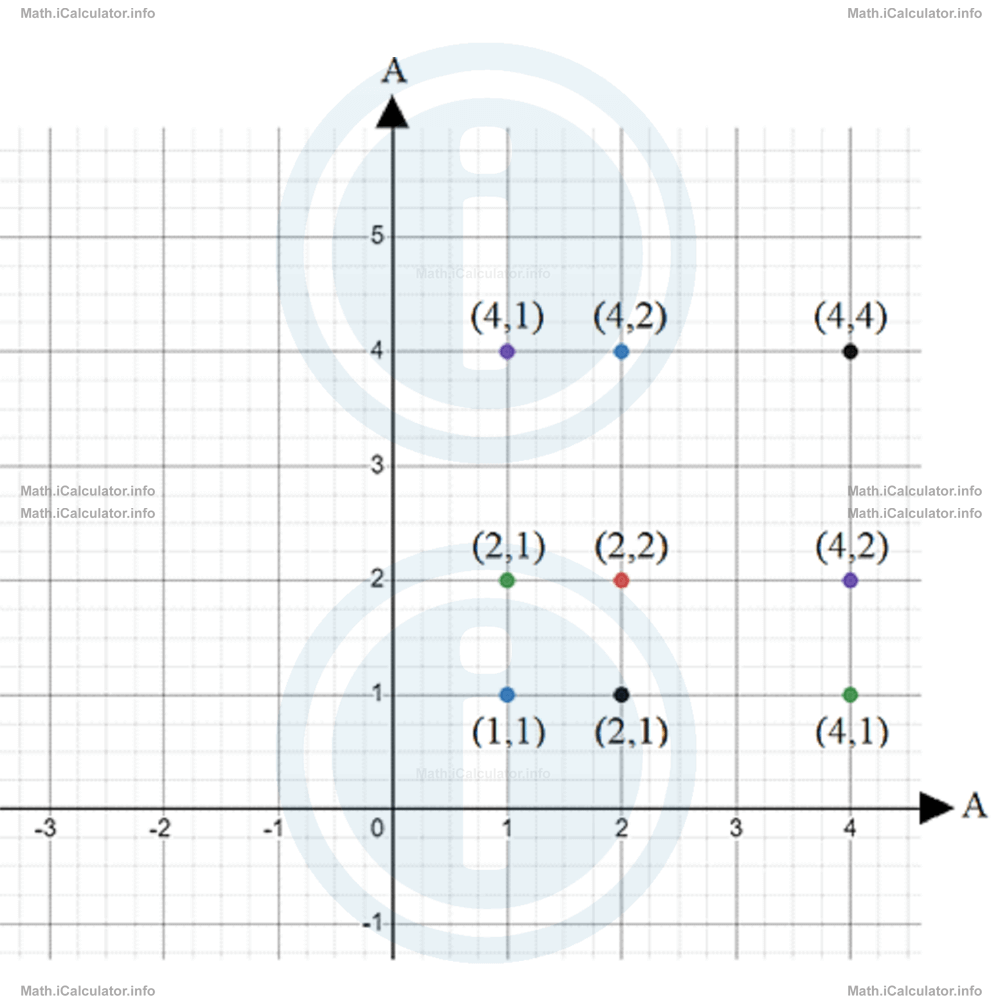Menu
Math Lesson 16.1.3 - Cartesian Square
Please provide a rating, it takes seconds and helps us to keep this resource free for all to use
Welcome to our Math lesson on Cartesian Square, this is the third lesson of our suite of math lessons covering the topic of Relation and Function, you can find links to the other lessons within this tutorial and access additional Math learning resources below this lesson.
Cartesian Square
A Cartesian square is obtained when all elements of the same set A multiply each other. In symbols, we express the Cartesian square as A × A or A2 (hence the name Cartesian square). The Cartesian plane discussed in the previous lesson is actually a Cartesian square because the elements in each direction are numbers, i.e. they belong to the same set - the set of real numbers R. The particular of Cartesian square elements is that they have the same number of inputs and outputs, i.e. the total number of ordered pairs obtained is a complete square, i.e. 1, 4, 9, 16, 25 and so on. For example, the Cartesian square of set A = {1, 2, 4} has 9 elements, that is 9 ordered pairs. Indeed, A × A = A2 = {(1, 1), (1, 2), (1, 4), (2, 1), (2, 2), (2, 4), (4, 1), (4, 2), (4, 4)}.
The figure below shows the Cartesian square above in the Cartesian plane. Please, observe the square shape of the figure obtained by the ordered pairs shown in this plane.

You have reached the end of Math lesson 16.1.3 Cartesian Square. There are 9 lessons in this physics tutorial covering Relation and Function, you can access all the lessons from this tutorial below.
More Relation and Function Lessons and Learning Resources
Whats next?
Enjoy the "Cartesian Square" math lesson? People who liked the "Relation and Function lesson found the following resources useful:
- Cartesian Square Feedback. Helps other - Leave a rating for this cartesian square (see below)
- Functions Math tutorial: Relation and Function. Read the Relation and Function math tutorial and build your math knowledge of Functions
- Functions Revision Notes: Relation and Function. Print the notes so you can revise the key points covered in the math tutorial for Relation and Function
- Functions Practice Questions: Relation and Function. Test and improve your knowledge of Relation and Function with example questins and answers
- Check your calculations for Functions questions with our excellent Functions calculators which contain full equations and calculations clearly displayed line by line. See the Functions Calculators by iCalculator™ below.
- Continuing learning functions - read our next math tutorial: Injective, Surjective and Bijective Functions. Graphs of Functions
Help others Learning Math just like you
Please provide a rating, it takes seconds and helps us to keep this resource free for all to use
We hope you found this Math tutorial "Relation and Function" useful. If you did it would be great if you could spare the time to rate this math tutorial (simply click on the number of stars that match your assessment of this math learning aide) and/or share on social media, this helps us identify popular tutorials and calculators and expand our free learning resources to support our users around the world have free access to expand their knowledge of math and other disciplines.